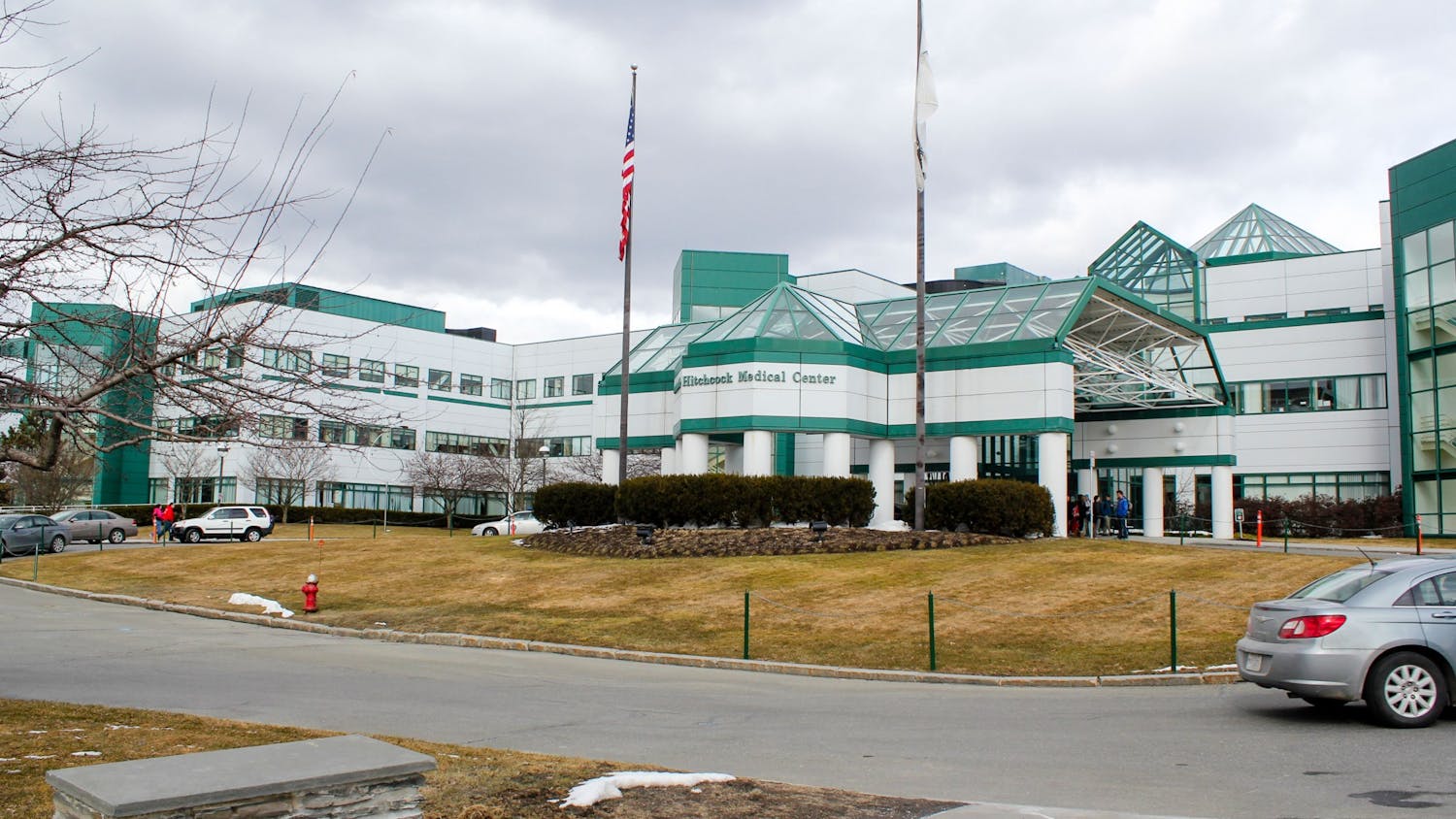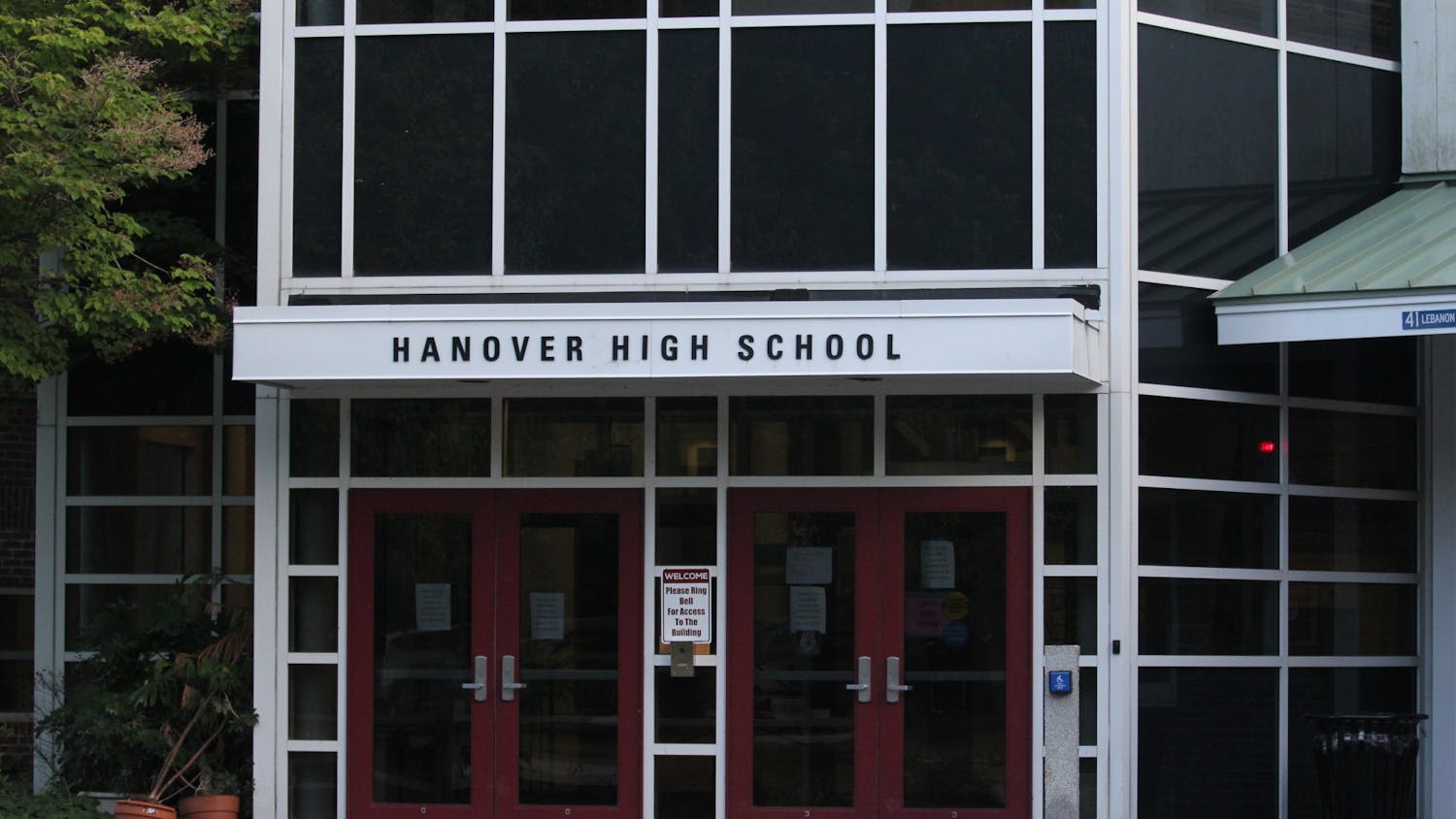This article is featured in the 2020 Freshman special issue.
Even Dartmouth, tucked away in a rural New Hampshire town, couldn’t escape COVID-19. In fact, New Hampshire’s first and second confirmed cases of the virus were members of the Dartmouth community — both were employees at Dartmouth-Hitchcock Medical Center. Despite this early outbreak, prior to the return of students in the fall term, the College’s last known case was reported in April, according to COVID-19 task force co-chair Lisa Adams, and community transmission numbers have remained low compared to other counties and states.
Before the first case of COVID-19 appeared locally at Dartmouth in March, Adams said that a travel-focused committee was already working to bring back students who were living in European countries with more severe outbreaks. At the time, Italy suffered a massive outbreak, and Dartmouth’s language study abroad program in Rome was cut short.
The first DHMC employee who tested positive for COVID-19 on March 2 had recently returned from Italy, according to Adams.
Hanover town manager Julia Griffin said she had been observing the spread of the virus since December and felt “disappointed but not surprised” when cases emerged in the Upper Valley.
“Those of us in the municipal management business started to pay attention when it was still an initial pandemic in China,” Griffin said. “Once it hit our shores in the Pacific Northwest, I think we all felt that it was entirely likely that you could see it spread across the country given how fluid this nation is.”
Caitlin Blinkhorn, a student at Colorado College who resides in Norwich, said she was at school when she read about the first case in the Upper Valley. She reflected that it was “naive” of her to feel thankful she wasn’t in the area.
“I remember seeing that and thinking I'm glad I'm still in Colorado, where we haven't seen any cases yet,” Blinkhorn said. “I was not really in the mindset of thinking that everyone would be sent home.”
The second reported case of COVID-19 both at Dartmouth and in New Hampshire emerged on March 3 and was linked to the first. The man had come into close contact with the first positive individual, who broke self-isolation to attend a Tuck School of Business event in White River Junction, Vermont. According to Adams, after the state conducted extensive contact tracing for the event, they concluded that no others present had been infected.
In addition to the two DHMC employees, a graduate student living off campus later tested presumptive positive on March 16. Dartmouth’s first undergraduate case was reported two days later, and by April 6, five undergraduates on campus had tested presumptive positive.
Adams said that the majority of these cases were travel-related and not from community transmission. Prior to the fall arrival of undergraduates, Adams noted that since April, there had not been any reported cases in the Dartmouth community.
“It's certainly possible that an employee who was working from home and didn't need to come on campus tested positive,” Adams said. “We didn't know about [that] because they dealt with it and didn't need to interact with Dartmouth. As far as we know, there were no more cases than those original eight in our community.”
As roughly 2,300 undergraduate students return to campus this fall and go through mandatory testing, however, two students have tested positive for COVID-19 as of Thursday.
Protocols that helped to prevent significant community transmission in the spring included creating isolation spaces for students who tested positive, as well as conducting contact investigations managed by the New Hampshire Department of Health and Human Services. Adams said the College was also able to work out some of the practical details — like delivering meals and coordinating laundry — of shifting students to isolation and quarantine dorms.
In the fall, nine buildings will be designated for quarantine and isolation, yielding approximately 500 beds. The dorms were chosen based on configuration and access to bathrooms. Adams added that the number of reserved beds is “more than any of our peer institutions.”
Dartmouth began testing graduate students in early August, which Griffin said was a good “dry run” for when undergraduates return. Testing is being conducted at the Maynard parking lot, and according to the College’s COVID-19 reporting dashboard, which updates every Monday and Thursday, two COVID-19 cases have been reported among the over 3,100 people tested as of Thursday. Sixty-one people are in quarantine — 23 of whom are Tuck School of Business students who were deemed to have violated Dartmouth’s public health requirements — and five people are in isolation.
Compared to other counties in New Hampshire, Grafton County — which includes Hanover and Lebanon — has had relatively low rates of COVID-19. Despite containing 6.6 percent of New Hampshire’s population, as of Thursday, Grafton County’s 125 cumulative cases represent just 1.7 percent of total infections in the state. The New Hampshire towns with the highest number of cases are those near the Massachusetts border.
“A good deal of the difference in the virus counts between this part of the state and the southeastern part of the state is just physical proximity to a much larger population,” Griffin said.
Additionally, the town’s rural location allows easy access to distanced outdoor activities, which Adams said has “been in our favor.”
According to Adams, interactions between students and town residents have been “seamless” as they come across each other while moving around in Hanover, particularly in off-campus residential areas. Griffin noted that there have been tensions this summer, as some town residents did not feel that students were abiding by social distancing guidelines — a sentiment she voiced publicly in a July 24 guest column in The Dartmouth. The town subsequently issued a mask mandate on Aug. 10 with a fine of $100 for violations and up to $500 for repeated violations.
“I don't really think [it’s] fair to the families if they feel uncomfortable with college students not following any of those [guidelines],” Blinkhorn said. “I'm not exactly sure what the answer is because we’re college students and we love being social, but I think that the students could definitely be more responsible.”
On Aug. 31, the Hanover Selectboard adopted a new ordinance that limits all indoor and outdoor gatherings to no more than 10 people in addition to the residents of the residential unit holding the gathering. The ordinance also requires host residents to submit an activities permit for both indoor and outdoor gatherings larger than 10 people — not including the hosts. Residents who host gatherings will be required to have every guest’s information available for contact tracing, and similarly, landlords will be asked to provide contact information for each tenant on request of health officers.
Despite friction between town residents and students, Hanover’s local businesses also depend heavily on activity generated by Dartmouth students, faculty and visitors, according to Griffin. Main Street staples including Morano Gelato and Skinny Pancake have already shuttered permanently amid the pandemic. Others have shifted to outdoor dining and takeout business models.
Griffin added that while downtown is currently bustling and residents are enjoying outdoor seating, she is concerned that if the pandemic drags on through next year, many businesses may struggle to survive.
In terms of determining next steps to respond to COVID-19, Adams said that Dartmouth’s network of consultants includes state epidemiologist Benjamin Chan and deputy state epidemiologist Elizabeth Talbot, who are both faculty at the Geisel School of Medicine and provided input as Dartmouth developed its fall reopening plan.
“Some college communities don't have the state's largest medical center and a medical school right here in [their] backyard,” Griffin said. “This region [has] really benefited from having those folks to provide extremely helpful advice and data.”
Other community members’ plans are contingent on the success of Dartmouth’s reopening plan. Hanover High School will offer full in-person classes with the option of remote learning. According to Diana Berger ’90 Med’96, whose daughters attend the high school, more than 90 percent of students will be returning to in-person classes when the school opens its doors on Sept. 8 — though the plan may be subject to change.
“[The high school] said they’re going to reverse it quickly if the pandemic increases in the local community,” Berger said. “Everyone’s waiting for Dartmouth students to come; that’s the crux right now.”
Adams said that even with the College’s aggressive testing protocol and preparation for isolation and quarantine, the plan is focused on “mitigating risks” rather than eliminating them, which is impossible during the pandemic. Still, she added that students have a consequential role in the community’s wellness.
“Instead of focusing on the things that you may feel like you're losing out on, try to focus on the things that you can do to make this a really successful year,” Adams said. “It's a call to action for all of us — everybody's got to do their part.”




